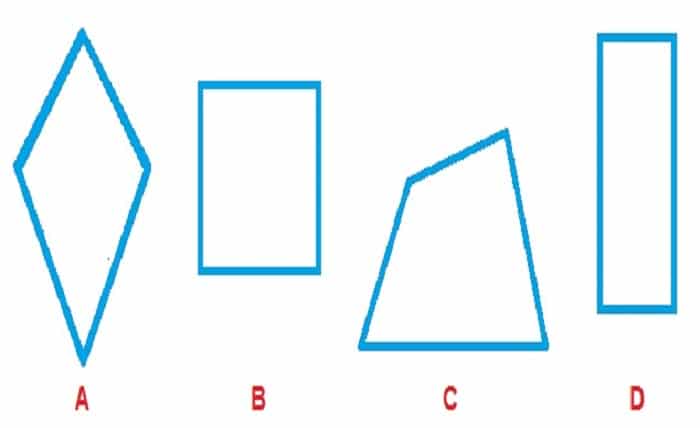Rhombus Shape: A Comprehensive Guide

Introduction
The rhombus shape, often referred to simply as a rhombus, is a fascinating geometric figure that captures the interest of both students and professionals alike. Defined as a quadrilateral with all four sides of equal length, the rhombus shape is more than just a symmetric figure; it holds significant mathematical and practical relevance. This comprehensive guide will delve into the properties, types, and applications of the rhombus shape, providing you with a thorough understanding of its characteristics and uses.
Properties of the Rhombus Shape
The rhombus shape is distinguished by several key properties that make it unique among geometric figures. Firstly, all four sides of a rhombus shape are of equal length, which immediately sets it apart from other quadrilaterals. Additionally, opposite angles in a rhombus shape are equal, and the diagonals bisect each other at right angles. These properties are fundamental in understanding the rhombus shape and its various applications in geometry and design.
Types of Rhombus Shapes
There are different types of rhombus shapes, each with unique characteristics. While the most basic rhombus shape is simply a quadrilateral with equal sides, it can also be classified based on its angles. For example, a rhombus shape with all right angles is known as a square, which is a special case of the rhombus shape. Understanding these variations helps in distinguishing between different types of rhombus shapes and their specific properties.
Rhombus Shape in Geometry
In the study of geometry, the rhombus shape plays a crucial role in various theorems and problems. Its unique properties, such as equal side lengths and perpendicular diagonals, make it a key figure in geometric proofs and constructions. For instance, the area of a rhombus shape can be calculated using the lengths of its diagonals, which is a useful formula in both theoretical and practical applications of geometry.
Applications of the Rhombus Shape
The rhombus shape has a wide range of applications beyond the realm of geometry. In engineering, architecture, and design, the rhombus shape is often used for its aesthetic appeal and structural properties. For example, rhombus-shaped tiles are popular in flooring due to their ability to create visually appealing patterns. Similarly, in architecture, the rhombus shape can be found in various building designs and decorative elements.
The Rhombus Shape in Art and Design
Artists and designers frequently utilize the rhombus shape to create compelling visual effects. Its symmetry and geometric precision make it an ideal choice for patterns and motifs. In modern art, the rhombus shape can be seen in various forms, from abstract paintings to intricate mosaic designs. Its versatility allows artists to explore different styles and techniques while maintaining a cohesive visual impact.
Comparing Rhombus Shapes to Other Quadrilaterals
To fully appreciate the rhombus shape, it is essential to compare it with other quadrilaterals such as squares, rectangles, and parallelograms. While all these figures share some common properties, the rhombus shape is unique in its requirement for equal side lengths. Understanding these differences can help clarify the specific characteristics of the rhombus shape and its relationship to other geometric figures.
The Mathematical Significance of the Rhombus Shape
Mathematically, the rhombus shape is significant due to its unique properties and relationships with other geometric figures. The formula for calculating the area of a rhombus shape, using the lengths of its diagonals, highlights its importance in mathematical problems. Additionally, the rhombus shape is often used in coordinate geometry to solve problems involving distances and angles.
Real-World Examples of the Rhombus Shape
Real-world examples of the rhombus shape can be found in various contexts. From everyday objects like kite designs to architectural elements and engineering structures, the rhombus shape is prevalent in numerous applications. For instance, many kite designs utilize the rhombus shape for its aerodynamic properties. Similarly, certain bridges and buildings incorporate the rhombus shape for both structural and aesthetic reasons.
Educational Importance of the Rhombus Shape
In education, the rhombus shape is an important topic in geometry curricula. It serves as a foundational concept for understanding more complex geometric ideas. Teaching the rhombus shape helps students develop spatial reasoning skills and grasp fundamental geometric principles. Educational activities often include drawing, measuring, and analyzing rhombus shapes to reinforce these concepts.
Read more about: technewztop
Conclusion
The rhombus shape is a fundamental geometric figure with a variety of properties and applications. Its equal side lengths, perpendicular diagonals, and symmetrical characteristics make it an interesting and versatile shape in both theoretical and practical contexts. By understanding the properties, types, and uses of the rhombus shape, you gain insight into its significance in geometry, art, design, and real-world applications. Whether you’re a student, professional, or enthusiast, a deeper knowledge of the rhombus shape enriches your understanding of geometry and its applications.
Read more about: tcgplayer
FAQs
1. What is a rhombus shape?
A rhombus shape is a quadrilateral with all four sides of equal length and opposite angles that are equal. Its diagonals bisect each other at right angles.
2. How do you calculate the area of a rhombus shape?
The area of a rhombus shape can be calculated using the formula: Area=12×d1×d2\text{Area} = \frac{1}{2} \times d_1 \times d_2, where d1d_1 and d2d_2 are the lengths of the diagonals.
3. What are some real-world examples of the rhombus shape?
Examples of the rhombus shape in the real world include kite designs, certain architectural elements, and rhombus-shaped tiles used in flooring.
4. How is a rhombus shape different from a square?
A rhombus shape has all sides equal in length, but its angles are not necessarily right angles. A square is a special type of rhombus where all angles are right angles.
5. Why is the rhombus shape important in education?
The rhombus shape is important in education because it helps students understand fundamental geometric concepts, develop spatial reasoning skills, and solve various geometric problems.
Read more about: rajkotupdates.news




